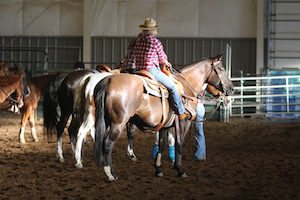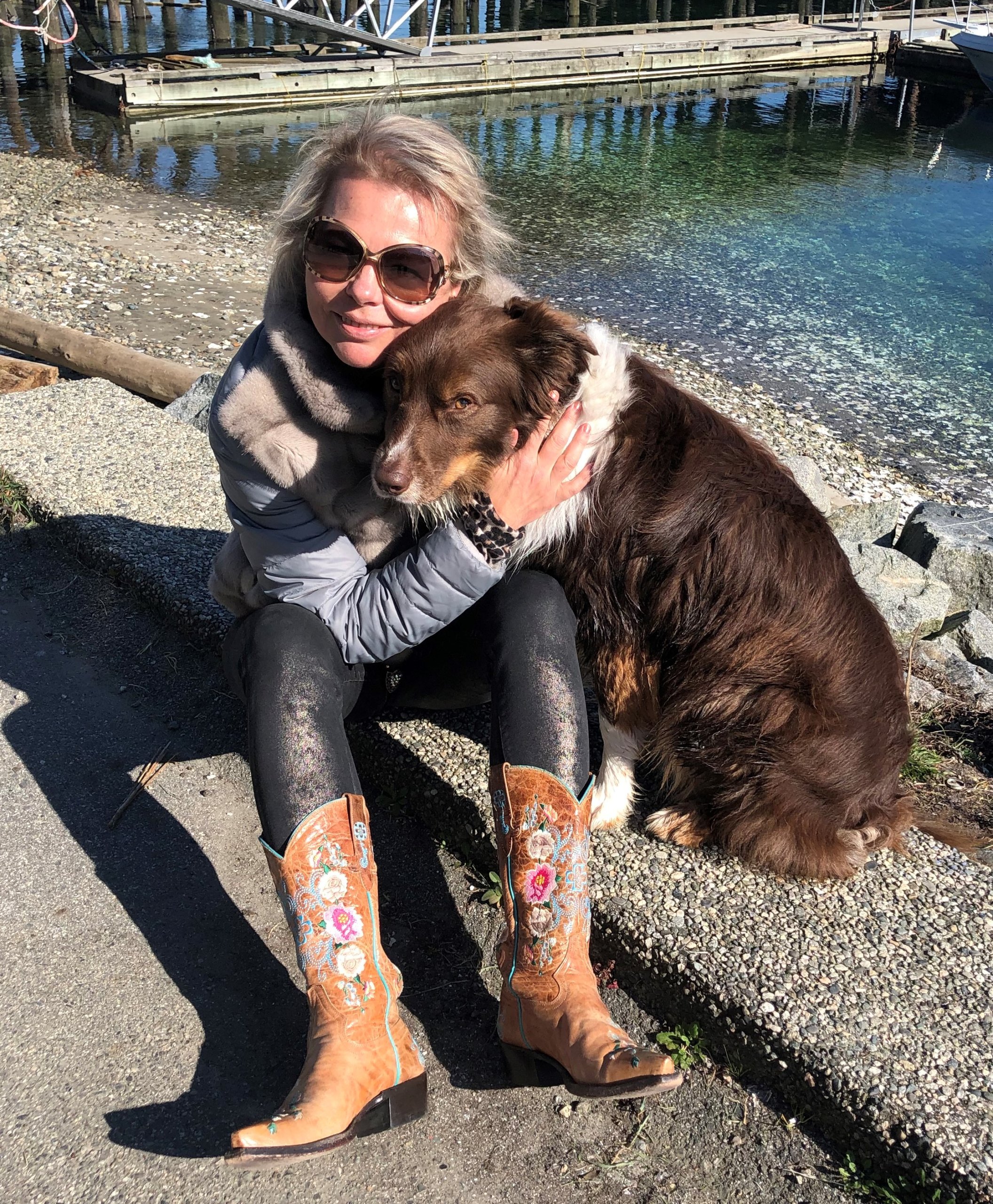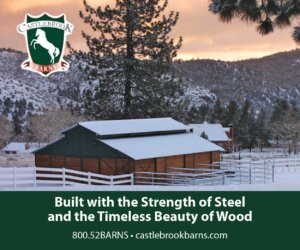Learn to Identify the Two Most Common Areas of Soreness
by Carole Herder

When your horse starts to look “off,” pinpointing the root cause can be challenging. For the responsible horse owner, proper horse care involves sifting out reality from dogma. Once one develops a discerning eye and addresses the two main “hot spots” in a horse’s body where most issues are rooted—the back and hooves—other areas of soreness become easier to identify.
Learn the Warning Signs
Horses do not conspire to deceive or mislead us; they don’t pretend something is wrong. It is our responsibility to take note of their behavior and understand what it is communicating. This can be difficult because people get used to seeing a stilted tender gait and this becomes “normal.” A horse running with complete freedom of movement can look quite different than what we are accustomed to seeing under saddle.
Your horse will tell you his saddle is not fitting properly long before the obvious development of discoloration and white hairs on his back. How? When you approach with a saddle he will pin his ears back; his movement will be stiff and unnatural; he may become unable to pick up the proper lead and/or swishes his tail when cantering. By the time he no longer has pigment in his follicles and his hairs have turned white around the withers, circulation to that area has been inhibited for many months. If you had read the earlier signals from the horse, you could have fixed the cause of the problem before symptoms presented.
Back to Basics
Here are some important issues concerning your horse’s back, as well as things to consider related to riding and saddle fit:
- Uneven saddle construction. Like a pair of human shoes, even good saddles may have slightly uneven construction. The imbalance can be in asymmetrical trees, unevenly placed stirrup bars, unevenly stuffed panels which displace the gullet and changes in the shape of wool flocking. Turn your saddle upside down and look down the center. You will often see a difference from one side to another.
- Asymmetry of the horse’s body. Horses (like humans) may develop differently on the left and right sides of their bodies.
- Changes in the horse’s musculature. Bodies change and develop. A horse’s musculature will change throughout the riding day (as the horse tires) and over the season (as the horse ages, developed, tones or loses muscle mass).
A saddle is a static object, but your horse is a living dynamic creature. Even slight changes in your horse’s weight throughout the year have a significant impact on the saddle’s fit. Many riders forget that a horse normally undergoes alterations in weight and posture throughout the seasons, and his life. Saddle fit significantly impacts your horse’s experience, yet we continue to put the same old saddles on their backs, year in and year out. That’s what saddle pads are for, right? Sometimes. However, most saddle pads underperform when it comes to a customized and continually changing fit. You need to find the saddle pad that addresses all the changes that come with new seasons, age, injuries and habits. And at various points, you should have a qualified saddle fitter look at your saddle and evaluate whether changes are needed.
Hooves and Hearts
You may have heard it said that a horse has five hearts, four on the ground and one in the chest. This refers to the frog’s blood pumping function, how it circulates blood down through the extremities and back again. The frog spreads the heel apart, drawing the sole flat and inviting the bone structure of the leg to descend into the hoof. This is how shock is absorbed in the hoof capsule. If you can accept that circulation is imperative to the distribution of nutrients throughout the system, and that healthy blood flow facilitates healing, it follows that limiting blood flow will lead to degeneration. If the frog cannot make ground contact and function as it should, then shock cannot be properly absorbed and blood cannot freely flow. Horses were first shod with metal shoes about 1,500 years ago, long before people understood the physiology of the hoof. When metal is nailed on all around, and the hoof is clamped in its smallest most contracted position, proper blood circulation and shock absorption are dangerously impeded.
Take a metal shoe and bang it against a hard surface. You will feel the tremors vibrate up your arm. In fact, even the nails cause vibration, compromising hoof integrity and breaking down hoof structure. If you think metal shoes provide protection, please remember that the outside walls of the hoof are already hard and that it is actually the softer and more vulnerable middle sole area that needs the protection.
If your horse looks off in some way, or isn’t performing with freedom and ease, consider evaluating his primarily hot spots for lameness: the back and feet. In most cases, this is where problems lie. Correctional measures are often simple, but not easy. In the end, lameness or disease should not be considered an acceptable part of horse ownership. Don’t compromise your horse’s comfort and well being.
Carole Herder has a genuine passion for educating horse owners worldwide, especially on all matters related to natural horsemanship. Given her strong belief that keeping horses natural and barefoot alleviates hoof problems, Carole designed and developed Cavallo Simple and Sport Boots. In 1993, she also designed and developed Total Comfort System Saddle Pads. Providing comfort for horses is Carole’s passion. Visit www.cavallo-inc.com
Originally Published October 2014 Issue

Carole Herder is the author of #1 bestselling books There Are No Horseshoes in Heaven and Hoofprints on The Journey. Her company, Cavallo, manufactures, and distributes Cavallo Hoof Boots and Saddle Pads to 26 countries worldwide, and all Cavallo products are designed and developed by Carole. She’s an honoured recipient of the BCBusiness Women Innovator Award, Royal Bank of Canada Woman Entrepreneur Award, a member of the Women Presidents’ Organization and a certified Chopra University Yoga Instructor and Ayurvedic Teacher.





